2013
Tal hållet vid Wielkopolski Kongres Kobiet in Poznan 14 november 2013, the panel of "Equality and Diversity in Education"
- Sssssch! It´s the NEWS! I´m LISTENING!
- But mommy, what is a nuclear bomb?
- You will understand when you grow up, dear! Now run along and play!
I grew up during the cold war, and I remember how troubled and scared the adults were. It is natural to try to protect your kids from the more difficult parts of life, we want them to have a happy childhood. When I got kids of my own, I decided to try to explain everything they wondered about, because I think that the world seems less scary, if you understand more of it. Even things that are as horrible as war and famine, torture and evil, things you can never understand or explain. If you really talk with children 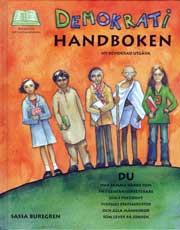 about the worst in the world, they will respect that you don´t always have all the answers.
about the worst in the world, they will respect that you don´t always have all the answers.
That is why I wrote the book on Democracy for Children. In this book you follow my daughter Jorinda, when she is trying to understand the world, and how she can affect her own existance. The book begins with a list, where she writes down everything, that could be better if she could participate in the decisions.
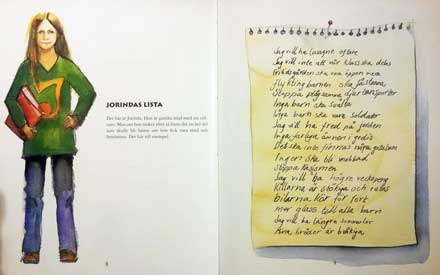
My School Workshops on Democracy, begin in the exact same way. The pupils are between 10 and 16 years old, and the workshops last for about 90 minutes. The first thing I do, I ask the pupils to make the same list, as Jorinda did. Meanwhile I write headlines on the whiteboard:
FAMILY. SCHOOL. COMMUNITY.
GOVERNEMENT. EUROPEAN UNION. UNITED NATIONS.
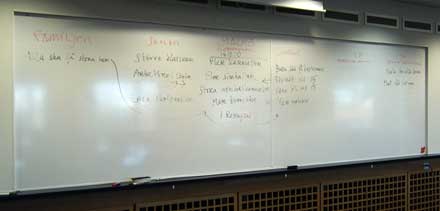
Then they chose an issue from their list, the one they feel is most urgent. Issues such as:
I want more allowence!
The boys are to noisy in class!
Don´t deport our classmate!
No children should be soldiers!
The whole class discusses where the decisions are made, based on their issue. Is it in the School maybe? Or does it happen within the Family? Maybe under the UN headline? When we have decided, we write it down under the correct headline on the whiteboard. When all the issues are placed, it is time to move onto the next step. I want to show them practical strategies for change. To show them, that it is possible to make their voice heard in society. Even if they are only twelve years old.
We start out with the FAMILY. I don´t pretend I have all the answers, but together we find ways. For instance: prepare your arguments in advance, try to keep calm and listen to the other side. Maybe get the whole family together to discuss the matters.
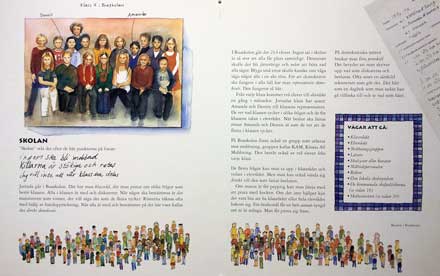
Next step is SCHOOL.
This is the time to talk about representative democracy. A class is such a small crowd, that you can raise your voice and be heard by everyone in the class council. The class council then elects two people to the school council. The school council is a miniature parliament, the foundation of our democracy. The statutes for the school that the governement has decided upon, states that a democratic and equal approach should engage the whole school, and that the pupils should have an impact on their own studies. The intensions are good, and in many schools this works very well, with many dedicated and ambitious teachers.
Then we continue through the headlines: COMMUNITY, GOVERNEMENT, EUROPEAN UNION.
The higher you get in the political hierarchy, the more inaccessible it gets. There are ways to contact the authorities on all levels, and you will get answers, even if it takes time. And even if you don´t get what you want, the authority has been given a face, is possible to communicate with. But you also learn an important lesson – democracy is a very slow process. But if you are driven by your issue, it may be worth the effort.
Now to the final headline: UNITED NATIONS.
Most grown ups have given up on finding solutions to the toughest issues, such as war and famine. But maybe not the kids?
The neuroscientist from Finland, Matti Bergström says:
"Children can see the larger picture, while adults get hung up on details. Therefor the children can find solutions to problems that adults would overlook. Whereas adults only live in the external world, children have an internal world that is just as important, where ghosts, monsters, dreams and ideas live."
What we need is dreams and ideas, to solve the horrors of the world. Children often come up with creative ideas and suggestions, even to the hardest questions. The ideas may not be viable now, but the children do not give up!
Now our 90 minutes is over, and hopefully the children now have some of the tools, to engage in their human rights. And to have a feeling, that they can have an affect on their own lives.
If they want to. Even if they are only twelve.
One thing I´ve learned from the workshops is, that children are more solidary and empathic than us grown ups. When you become a parent, the family has to come first. Society at large, becomes secondary. In Sweden, as in many other countries, the welfare state is dismantled. It´s Me instead of Us. But young people take action, protesting in a number of different ways. This gives me hope for the future, and this is how a democracy developes.
Children are not just the future. They are the present. Childhood is not a preperation for adulthood. It is a part of life. There is no risk that we can take away their childhood, instead we must include them, and give them context, so they can share their dreams and ideas with us. And their hope!
By the way: Jorinda – what happened to her? Here she is: a chimney sweeper!
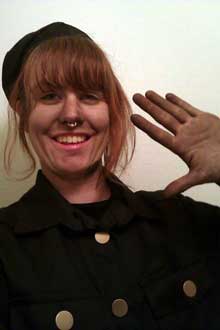
Thank you for listening!

